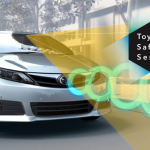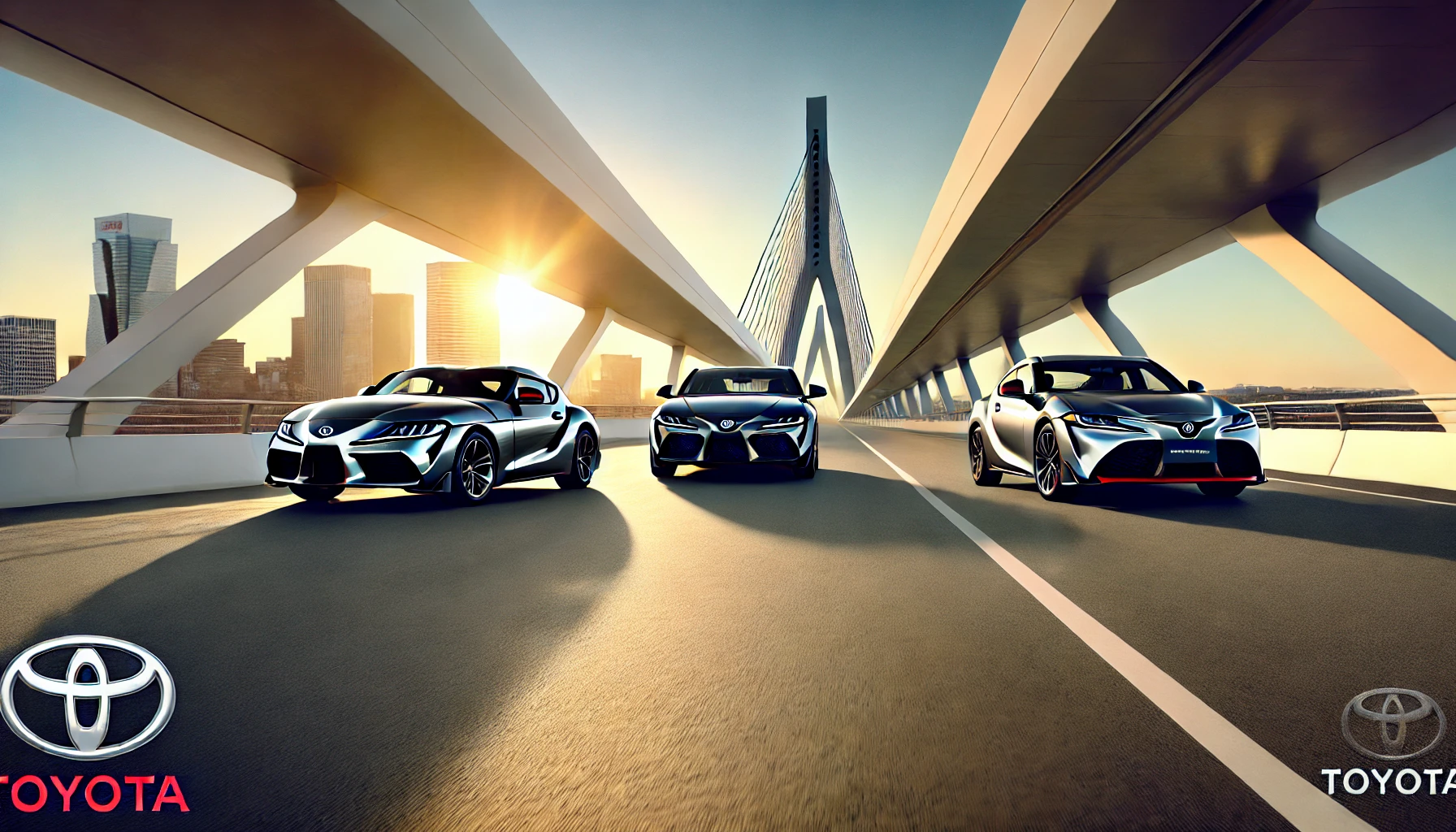As the automotive industry enters a new era of innovation, autonomous driving technology is emerging as a key driver of change. Toyota, a global leader in mobility solutions, is at the forefront of this revolution, advancing its vision of safer, more efficient, and more accessible transportation through cutting-edge autonomous driving systems. With a focus on enhancing safety, improving mobility for all, and developing intelligent driving technologies, Toyota’s research and development in autonomous driving is shaping the future of mobility.
In this article, we’ll explore Toyota’s major advancements in autonomous driving technology, the key systems that power these innovations, and how Toyota’s approach to autonomy is redefining the way we move through cities and communities.
1. Toyota’s Vision for Autonomous Mobility: Mobility for All
Toyota’s approach to autonomous driving is grounded in its broader vision of “Mobility for All,” which seeks to create a world where everyone, regardless of age, ability, or geographic location, has access to safe and efficient transportation. Autonomous driving is central to this vision, with Toyota aiming to make transportation more inclusive, convenient, and environmentally friendly.
Unlike some competitors who focus exclusively on full autonomy (Level 5), Toyota is taking a more incremental approach, blending driver-assist features with increasingly advanced autonomous capabilities. Toyota’s development strategy includes creating systems that enhance human driving rather than replacing it entirely. This philosophy is embodied in Toyota’s “Guardian” and “Chauffeur” concepts.
- Guardian: Designed to enhance the safety and performance of human drivers, Guardian acts as a safety net, assisting drivers by detecting hazards, correcting mistakes, and preventing accidents when necessary. The system continuously monitors the driving environment and intervenes when it senses danger, acting as a co-pilot for safer driving.
- Chauffeur: This system focuses on fully autonomous driving, where the vehicle takes full control without human intervention. Chauffeur is designed for situations such as highway driving, urban environments, and specific use cases like ride-sharing or personal mobility solutions.
With these two complementary systems, Toyota envisions a future where both human drivers and autonomous systems work together to improve safety and efficiency on the road.
2. Toyota Research Institute (TRI): Driving Innovation in Autonomy
Toyota’s autonomous driving efforts are led by the Toyota Research Institute (TRI), established in 2015. Based in Silicon Valley, TRI is dedicated to advancing AI, robotics, and autonomous driving technologies. TRI’s mission is to build a future where mobility is safer and more accessible, focusing on innovations that can significantly reduce traffic accidents, improve transportation efficiency, and enhance the driving experience.
TRI’s work in autonomous driving includes developing state-of-the-art machine learning algorithms, computer vision systems, and sensor technologies that enable vehicles to perceive their surroundings, make decisions in real-time, and navigate complex environments.
One of TRI’s notable achievements is its development of Guardian, a system that can take over the controls if it detects that the driver is about to make a critical error. The Guardian system represents Toyota’s commitment to reducing traffic fatalities, which is a key element of its broader “Toyota Mobility Teammate Concept,” a vision of human-centric mobility where drivers and autonomous systems collaborate.
3. Key Technologies Behind Toyota’s Autonomous Driving Systems
Toyota’s advances in autonomous driving are powered by a combination of sophisticated technologies that work together to enable safe, intelligent vehicle operation. These key technologies include:
- LIDAR, Radar, and Cameras: Toyota’s autonomous vehicles are equipped with a range of sensors, including LIDAR (Light Detection and Ranging), radar, and cameras, which allow the vehicle to perceive its surroundings in 3D. LIDAR sensors generate detailed maps of the environment, while radar systems help detect objects and measure their speed and distance. Cameras capture visual data to help the vehicle recognize road signs, lane markings, and other important cues.
- Artificial Intelligence (AI) and Machine Learning: AI plays a crucial role in Toyota’s autonomous systems, enabling vehicles to make real-time decisions based on the data collected by their sensors. Machine learning algorithms allow the vehicle to continuously improve its driving capabilities by learning from past experiences and adapting to new situations.
- High-Definition Mapping and GPS: Toyota’s autonomous systems rely on high-definition maps and GPS technology to accurately navigate roads and identify specific locations. These maps are continually updated to reflect changes in road conditions, construction zones, and traffic patterns, ensuring that the vehicle has the most accurate information available.
- Connectivity and V2X Communication: Toyota is developing vehicle-to-everything (V2X) communication systems that allow autonomous vehicles to communicate with other vehicles, infrastructure, and even pedestrians. V2X technology enhances safety by enabling vehicles to share information about their position, speed, and direction, helping to prevent collisions and improve traffic flow.
4. Toyota’s Autonomous Test Vehicles: Paving the Way for Safer Roads
Toyota has been extensively testing its autonomous driving technologies on public roads and in controlled environments. These test vehicles, known as Platform 4.0 (P4), are built on the Lexus LS500h chassis and are equipped with a suite of sensors, cameras, and AI-powered systems that enable them to operate autonomously in real-world conditions.
The P4 vehicles have been tested on highways, city streets, and in various weather conditions to evaluate their ability to handle complex traffic scenarios, pedestrians, cyclists, and other road hazards. Toyota’s testing program has focused on ensuring that autonomous vehicles can operate safely and reliably in diverse environments while adhering to local traffic laws.
In addition to its own testing, Toyota has partnered with Aurora, a leading self-driving technology company, to accelerate the development of autonomous mobility services. This partnership combines Toyota’s vehicle engineering expertise with Aurora’s autonomous driving platform to create safe and scalable solutions for future mobility.
5. Autonomous Ride-Hailing and Mobility-as-a-Service (MaaS)
Toyota’s vision for autonomous driving extends beyond personal vehicles to include Mobility-as-a-Service (MaaS) solutions, such as ride-hailing, shuttle services, and urban mobility systems. In 2018, Toyota unveiled its e-Palette, an autonomous, fully electric vehicle designed for ride-sharing, deliveries, and mobile retail services.
The e-Palette represents Toyota’s vision for a flexible and versatile mobility platform that can be used for a wide range of applications. By leveraging autonomous driving technology, Toyota aims to create MaaS solutions that improve transportation efficiency, reduce congestion, and offer new business opportunities in urban environments.
Toyota is also working with partners like Uber and Didi Chuxing to develop autonomous ride-hailing platforms that will enable cities to reduce traffic congestion, lower emissions, and provide safer and more convenient transportation options.
6. Toyota’s Global Approach: Expanding Autonomous Driving Across Markets
Toyota’s autonomous driving strategy is global in scope, with efforts underway in key markets such as the U.S., Japan, and Europe. The company’s focus on safety, reliability, and scalability ensures that its autonomous systems can be adapted to different regions and driving conditions.
In Japan, Toyota has been developing autonomous systems for elderly mobility and last-mile transportation solutions, addressing the country’s aging population and urban mobility challenges. In the U.S., Toyota is focused on developing autonomous ride-sharing services and MaaS solutions for major cities, while in Europe, Toyota is exploring ways to integrate autonomous driving with public transportation systems.
By tailoring its autonomous solutions to meet the unique needs of each market, Toyota is working to create a future where autonomous mobility is accessible to all, regardless of location or ability.
7. The Future of Autonomous Driving: Challenges and Opportunities
While the promise of autonomous driving is exciting, there are still challenges to overcome before fully autonomous vehicles become mainstream. These challenges include regulatory hurdles, public acceptance, infrastructure development, and the technical complexity of building safe and reliable autonomous systems.
However, Toyota is well-positioned to address these challenges through its partnerships, investments in research and development, and commitment to safety. As Toyota continues to advance its autonomous driving technologies, the company is working closely with governments, industry partners, and local communities to ensure that autonomous mobility is implemented in a way that benefits society.
Toyota’s focus on incremental advancements, starting with driver-assist features and progressing toward full autonomy, ensures that each step of the journey is thoroughly tested and optimized for safety and reliability.
Conclusion: Toyota’s Role in Shaping the Future of Autonomous Mobility
Toyota’s advances in autonomous driving technology represent a significant leap forward in the quest for safer, more efficient, and more accessible transportation. From its Guardian and Chauffeur systems to its development of intelligent sensors, AI, and V2X communication, Toyota is pushing the boundaries of what’s possible in autonomous mobility.
As the future of transportation continues to evolve, Toyota’s commitment to safety, innovation, and inclusivity will play a key role in shaping how we move through our cities and communities. With its visionary approach and cutting-edge technologies, Toyota is poised to lead the way in the autonomous driving revolution, making mobility smarter, safer, and more sustainable for everyone.




